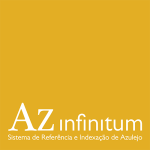Overview
Archaeological or architectural heritage Machine Learning Tools for data mining/extraction OS Digitization of collections Platform for data aggregation or retrieval
Az Infinitum – Azulejo Indexation and Referencing System (Sistema de Referência e Indexação de Azulejo) is a research-oriented project grounded in a relational database created to document, catalogue and index all the azulejo (glazed tiles) decorations produced and applied in Portugal since the late 15th century and still found in their original locations.
It is developed by a group specialized in the study of azulejos, the Az – Rede de Investigação em Azulejo (Azulejo Research Network), in collaboration with the National Azulejo Museum and the company Sistemas do Futuro.
WHY AZULEJO
Portugal is the “land of azulejos”, not only because artistic tilework has been everywhere since the late 15th century, but also because the azulejo is a very important and iconic heritage, rightly considered one of the country’s most distinctive art forms. The azulejo is part of our common history and impacts our collective memory of the past, as well as our present and future. Az Infinitum aims to study, preserve, promote, and thus activate this collective memory.
THE RESEARCH QUESTIONS
The project was born out of specific research questions, raised by a team of art historians from various institutions, as well as computer engineers and graphic designers, all of whom wished to create a system capable of documenting tile decorations from all periods and styles still found in situ, and to set up a wide-ranging dialogue between concepts like space, time, artistic agents, iconography, techniques, or materials. The aim was to generate contextualized readings covering long periods of time, thereby enabling researchers to zoom in and out on a history of more than five centuries, which is by no means linear, but multidimensional (Carvalho 2019).
THE STRUCTURE
Az Infinitum allows for different ways of entering the system, through the main menu and the homepage: 1) Azulejo in Architecture (including buildings, spaces and tile coverings); 2) Iconography; 3) Patterns and Frames (with a visual search of images using image region as a search query – VISE); 4) Visual Resources; 5) Authorships; 6) Bibliography; 7) Images. Even though the first coordinates all the others, the system’s relational structure enables users to access the data from any entry point.
CATALOGUING FIGURATIVE AZULEJOS
Az Infinitum uses Iconclass to catalogue all the figurative themes and specific aspects. The system includes a Portuguese translation made by the team between 2012 and 2014.
CATALOGUING PATTERNED AZULEJOS
While figurative tile decorations have unique (or almost unique) features and are designed for a specific location, patterned azulejos are serially produced and can be applied in any location and combined in different ways. Therefore, the study of these decorations poses specific challenges to art historians, such as the high and hitherto undetermined number of patterns that exist in Portugal – an issue that can hardly be tackled only by human analytical means.
The catalogue of patterns consists in the creation of a specific profile for each pattern, by cross-referencing a series of textual and visual markers. Once each profile has been created, it will allow to retrace the life path of a given pattern, regardless of where and when it was applied.
AUTOMATIC PATTERN RECOGNITION
These profiles are currently being complemented by an automatic image recognition tool, which enable the identification and comparison of azulejos with each other and with sources of inspiration used by the artists and factories.
Az Infinitum uses VISE (VGG Image Search Engine), a free and open-source software designed to enable visual searches of large collections of images using a specific region of an image as the search query. VISE is developed and maintained by the Visual Geometry Group (VGG), at the Department of Engineering Science of the University of Oxford. Based on Relja Arandjelovic’s DPhil / Postdoc on VGG (2014), VISE is currently developed by Abhishek Dutta, under the coordination of Andrew Zisserman. Az acknowledges the unconditional support received during all the implementation stages and highlights the collaboration of Giles Bergel, VGG’s ambassador, whose help has been invaluable since 2017.
ACCESS TO Az INFINITUM
Az Infinitum was launched in 2010 and made available online in 2012, in open access. It is currently being updated and will soon become available in a new version. This technical update is the first step, and the translation of the entire system to English will follow as soon as possible.
TO KNOW MORE ABOUT THE DATA STRUCTURE
Rosário Salema de Carvalho, “To be part of… architecture, decoration or iconography. Documenting azulejo as integrated heritage,” ISPRS Annals of Photogrammetry, Remote Sensing and Spatial Information Sciences IV-2/W6 (2019): 39–46, https://doi.org/http://dx.doi.org/10.5194/isprs-annals-iv-2-w6-39-2019.
Access to the Az – Rede de Investigação em Azulejo (Azulejo Research Network) webpage > projects
Coordination:
Rosário Salema de Carvalho (Az – Rede de Investigação em Azulejo)
Alexandre Pais (National Azulejo Museum)
Database development:
Sistemas do Futuro
Project partners
Other partners
- Museu Nacional do Azulejo (National Azulejo Museum)
- Sistemas do Futuro, Lda.
